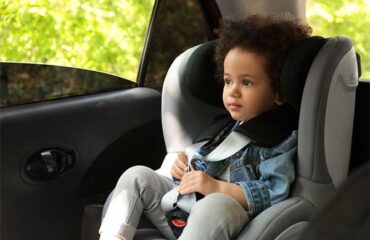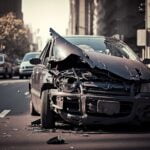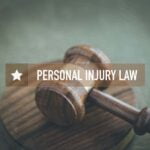Kansas Hit and Run Car Accident Attorney

Since 2009, there has been a massive rise of 62% in hit and run accidents in the US. In 2016 alone, nearly 800,000 hit and run crashes occurred on American roads causing over 2000 deaths. The worst statistic is the almost 7% rise of in such fatalities every year, with no signs of a downward trend coming.
For Kansas, the annual hit and run accident average stands at 5,000 crashes. This forced Kansas legislators to bring in tougher penalties to target motorists who show disregard for the life and well-being of other drivers and victims of such accidents.
While these laws punish the at-fault motorist, what are the options for the victims? Continue reading to see how hit and run accidents impact pedestrians and other motorists and the help available for the victims of these crashes.
A different and more dangerous beast!
A hit and run accident is a crash in which the at-fault motorist simply flees the scene, often leaving the other driver, pedestrian or motorcyclist very seriously hurt. Unfortunately, half of hit and run drivers nationally are never found, and in some states this rate is as low as just 10%.
Another problem is that not all hit and run crashes involve actual contact between two vehicles. In what are known as phantom car crashes, the at-fault motorists cause a collision by swerving or driving erratically, and leave the victim grappling with property damages and medical costs, frequently with no means to seek restitution.
It is the pedestrians and bicyclists who bear the brunt of the callousness and apathy of hit and run drivers. Nearly 60% of all hit and run fatalities are pedestrians and such accidents account for approximately 20% of all pedestrian deaths in the country.
The victims of hit and run accidents are the hardest hit of all!
For a person who is seriously hurt in an accident, whether a motorist, a passenger or a pedestrian, the biggest problem is the possible delay in getting medical help. When the at-fault driver flees the scene instead of notifying authorities and emergency medical services of an injury, those delays could be significant in whether or not the injured party makes a good recovery.
Moreover, when police are notified by bystanders or witnesses rather than those actually involved in the collision, it becomes much harder to get accurate and reliable information about the accident and the motorist involved in it. Without a police report to back the victim’s claim, seeking compensation even from his/her own insurance company can be hard.
Finally, if the at-fault motorist flees the scene, the victim does not have the insurance details needed to pursue a liability claim. In case of significant and life-threatening injuries, the compensation offered by the victim’s own coverage may not be enough. By running from the scene, the at-fault driver essentially robs the victim of his rightful means of restitution.
In a nutshell, hit and run accidents create a ripple effect that can bulldoze the victim’s personal, physical, professional and financial well-being.
What leads to hit and run accidents?
More often than not, the at-fault drivers in a hit and run accident leave the scene of the accident because they know that the crash was an outcome of their negligent or illegal action or because they have already committed a crime, making it worse for them if they are caught. It is reasonable to wonder if:
- These motorists are drunk when the accident occurs.
- The driver was either on drugs or had narcotic substances on their person.
- They were speeding or breaking other traffic laws.
- They do not have any or adequate auto insurance coverage.
- The motorist was distracted when the crash occurred.
- The driver has an active warrant out, meaning that waiting at the scene of the accident would lead to immediate arrest.
Regardless of what their reasons for running were, the fact is that they committed a crime the minute they decide to leave and not accept responsibility for their actions.
Kansas hit and run accident laws
These are the possible criminal repercussions that an at-fault hit and run motorist could potentially face:
- Physical injuries: Class A misdemeanor
- Significant bodily harm: Person Felony, Level 8
- Death: Person Felony, Level 6
- If the driver flees from the scene despite the knowledge that the accident caused injury/death: Person Felony, Level 5
- Property damage of less than $1000: Misdemeanor
- Property damage of more than $1000: Person misdemeanor, Class A
- Striking an unattended vehicle: Misdemeanor
What should you do if you are in a hit and run accident?
- Call the police: Whether you need medical attention or not, it is imperative to call the police. The accident report is a crucial document that plays a central role in the damage/injury claim process. Notifying the police also means that you will get almost immediate medical attention.
- Record information about the car: This is crucial and should be done immediately after the accident if possible. Don’t rely on your memory because shock can impact your ability to remember and recall things later. Write down or record this information on your cell phone or in a note.
- Get witness information: If there are people around who have witnessed the accident, get their names and contact information if they are willing to provide these details.
In summary, gather as much information as you can which will support your understanding and viewpoint of the events that occurred before and after the accident. However, do not try to chase the hit and run motorist, as this could potentially lead to charges against you.
Identifying the driver who caused the accident!
As stated above, most data show there is only a 50% chance of identifying hit and run drivers. However, you can stack the odds in your favor by recording as much information as you can about the vehicle, the driver, the accident and the circumstances that led to it. Immediately after the accident, if you can, make a note of this information:
About the car: The make, model, color, license plate number (even if you only get the first few or the last few digits), any other distinctive features like a decal on the body, stickers on the front or rear windshield, passengers if any in the vehicle, luggage being carried, etc.
About the driver: Any distinctive physical traits or what he/she was wearing, his/her reaction after the accident.
About the accident: The entire narrative of where you were going, where the other car came from when it hit you and what you did in response or in an attempt to avoid the accident.
About the circumstances: The direction from which the vehicle came at you before the crash, any distinctive driving behavior that would point to possible driver intoxication/distraction, the direction in which the car went after hitting you.
About the time and location: The area in which the accident happened, the exact time of the accident, any detrimental road/surface or weather conditions that may have contributed to the crash. Take pictures, if possible, of your vehicle and the scene of the accident.
Who compensates the victim of a hit and run crash?
If you have been injured in such an accident, you can seek insurance coverage and assistance from your own insurance company through two forms:
Personal Injury protection (PIP) benefits: No-fault insurance benefits are mandatory in Kansas. Your PIP coverage will pay for medical expenses and lost wages starting with the Kansas minimum of $4,500 in medical coverage and often much more.
Uninsured/Underinsured (UM/UIM) motorist coverage: You are required to carry a minimum UM/UIM coverage of $25,000 per person and $50,000 per accident for personal injuries. In cases of hit and run accidents you have access to this coverage on your policy.
In fact, because of the crucial role played by UM/UIM coverage in cases of hit and run accidents, experts often recommend that you talk with your insurance agent about purchasing much higher than minimum limits, which often comes at only a slight premium increase considering the additional protection you receive. For example, obtaining insurance limits of $250,000 per person and $500,000 per accident offers you protection of ten times the minimum coverage.
Why do you need a lawyer if you have been in a hit and run crash?
Unlike other accidents, in a hit and run scenario, you often do not have information about the at-fault driver. This can make an already bad situation much worse. When you contact DeVaughn James Injury Lawyers, the first thing our lawyers do is gather the required information to trace the driver if possible and/or to show that he/she was responsible for the crash. This is done by:
- Locating witnesses through 911 phone calls and police investigation, and recording the witness testimony.
- Gathering evidence from the scene of the crime, including video recordings from government and private sources.
- Examining surveillance tapes, when available, to prove erratic driving behavior.
- Performing a background check once the driver is found.
- Proving, through this evidence, that the driver located was indeed the one behind the wheel at the time of the crash.
Once the defendant is identified, our attorneys take the claim to his insurer and pursue all compensation options against the at-fault motorist. In summary, it is our team’s job and goal to explore and utilize every legal method available to get you maximum compensation.
Remember timing is particularly crucial in hit and run accidents, because the longer you wait, the more evidence you lose! Contact us today and we will get on the case while you focus on getting better!









